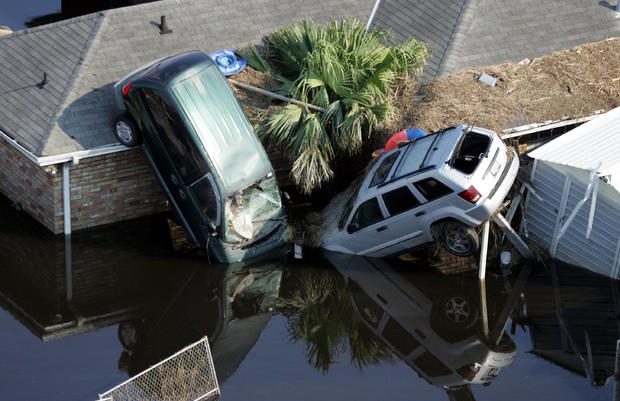Do you have the right home insurance?
(MoneyWatch) Last week I wrote about how most home insurance policies have limits on what they'll pay to rebuild your home in case disaster strikes and what folks must do to make sure they have enough coverage.
But having enough coverage to rebuild your home isn't enough. You also want to ensure that your insurance covers loss of use and loss due to flooding, as well as your home's contents no matter what the reason for the claim.
Contents coverage for all risks. For people with a single-family property, you need home insurance coverage called an HO-5 policy. Only this provides replacement cost coverage for contents damaged or lost due to all risks. This is particularly important if you have a larger home, expensive furnishings, jewelry, art, or a home office.
How to insure your home against disaster
Flood insurance. Standard home insurance policies don't cover flood damage. Homeowners in flood zones can buy flood insurance under the National Flood Insurance Program through the Federal Emergency Management Agency, with any claims typically serviced by your insurance company. These policies can range from $400 to $3,000 per year, with the average flood insurance policy costing about $600 per year. The maximum coverage for building property is $250,000 and $100,000 for personal property. Losses are covered for "actual cash value," not replacement value.
If you need more flood insurance coverage, you'll have to get it through private insurers. That means finding companies in your state that can provide policies with higher coverage limits. Owners of high-risk properties may have to look to so-called Fair Access to Insurance Requirements, or FAIR, plans, which are offered by state-mandated insurer organizations that cover high-risk properties.
Loss of use. One thing most homeowner policies do cover is "loss of use." If you have damage to your home and are forced to evacuate, you may find that the costs to stay in a hotel and other related living costs are generally covered up to a dollar limit (typically about 30 percent of the overall policy dwelling coverage). For instance, if your policy dwelling limit is $200,000, you could get up to $60,000 in reimbursement for any expenses associated with your loss of use.
Vacation home coverage. People who own vacation homes and second homes have special insurance needs to consider. When buying or updating homeowners' coverage on a second home, be sure to disclose to the insurance company that the home is a vacation home, the amount of time each year you occupy it, and if you ever rent out the property. Coverage for vacation or second homes should include additional liability coverage, loss of use, and loss of rental income benefits.
If you have this feature, then if you experience a loss the insurance policy will pay for you to rent another vacation home. It will also reimburse you for the rental income you could have received while the home is unable to be rented out.
The best advice: If you haven't reviewed your home insurance policy in a few years, then pull it out and read the policy coverage summary. Think about how the limits in your policy would apply if you experienced significant damage to your home. If you aren't sure about your coverage, then call your agent or insurance company and review the policy with them.

